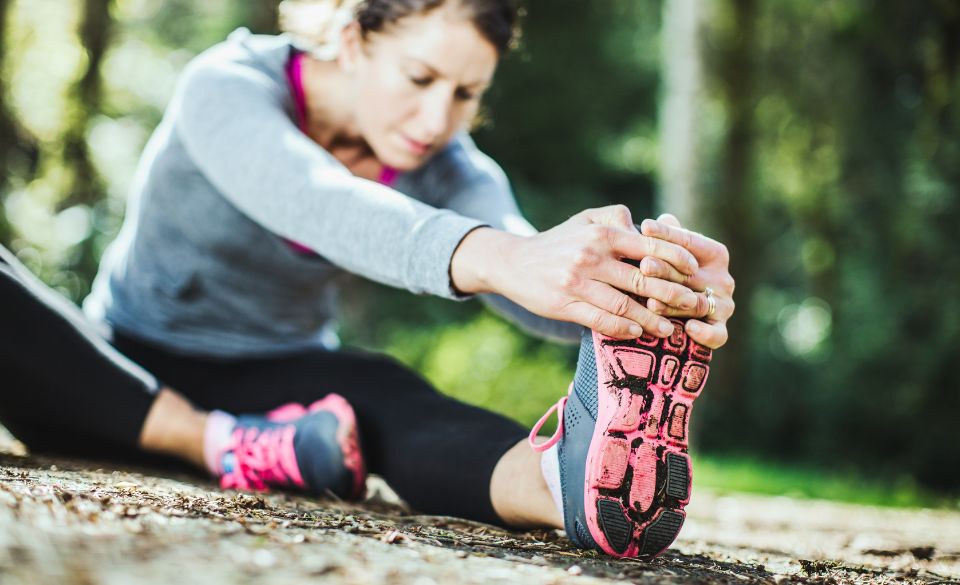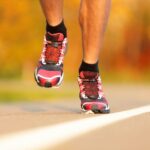
What Is the Best Recovery After Running? 5 Strategies To Follow
Page Contents
Running is a popular physical activity that comes with numerous health benefits such as improved cardiovascular health, weight management, and mental wellbeing. However, the repetitive motion of running can put significant strain on the muscles and joints, leading to muscle soreness and fatigue. To optimize performance and prevent injury, it is crucial to incorporate effective recovery strategies into your post-run routine. In this article, we will explore the best recovery practices backed by scientific research to help you achieve optimal post-run recuperation.
What Is The Best Recovery After Running
Active Recovery
Active recovery refers to low-intensity exercises that help to increase blood flow to the muscles, promoting healing and reducing soreness. Research shows that engaging in active recovery after running can significantly improve muscle function and reduce muscle damage. Activities such as walking, light cycling, and swimming are effective active recovery strategies that can help to flush out lactic acid and reduce inflammation in the muscles.
Static Stretching
Static stretching involves holding a stretch position for a period of time to improve flexibility and reduce muscle tension. Although there is some controversy surrounding the effectiveness of static stretching, research has shown that incorporating it into your post-run routine can lead to improved range of motion, reduced muscle soreness, and improved muscle performance. It is important to note that static stretching should be done after running when the muscles are warm and not as a warm-up exercise.
Nutrition and Hydration
Proper nutrition and hydration are essential for effective post-run recovery. Consuming a carbohydrate-rich meal within 30 minutes of completing a run can help to replenish glycogen stores in the muscles, which are essential for energy production during exercise. Adequate protein intake is also crucial for muscle recovery and repair. Additionally, staying hydrated by drinking water and electrolyte-rich fluids can help to prevent dehydration and promote optimal muscle function.
Foam Rolling
Foam rolling involves using a cylindrical foam roller to apply pressure to specific areas of the body to release muscle tension and soreness. Research has shown that foam rolling can improve range of motion, reduce muscle soreness, and improve muscle performance. Incorporating foam rolling into your post-run routine can help to release tight muscles and improve overall muscle function.
Sleep and Rest
Sleep and rest are crucial for optimal post-run recovery. During sleep, the body repairs and regenerates tissues, including muscles. Research has shown that sleep deprivation can lead to decreased muscle function and increased muscle soreness. Therefore, it is essential to get adequate sleep and rest to promote optimal post-run recovery.
Combining These For Optimal Recovery After Running
To achieve optimal recovery after running, it is best to combine multiple recovery strategies into your post-run routine. Here are some tips on how to combine the different recovery practices mentioned in the article:
1. Start with active recovery: After finishing your run, engage in low-intensity activities such as walking or light cycling for 5-10 minutes. This will help to increase blood flow to the muscles and promote recovery.
2. Follow with static stretching: After active recovery, perform static stretching exercises for the major muscle groups used during your run. Hold each stretch for 20-30 seconds and repeat each stretch 2-3 times.
3. Refuel with proper nutrition and hydration: After stretching, consume a carbohydrate-rich snack or meal to replenish glycogen stores in the muscles. Ensure that you also drink plenty of water and electrolyte-rich fluids to stay hydrated.
4. Foam roll to release muscle tension: After refueling, use a foam roller to release muscle tension and reduce soreness. Focus on the major muscle groups used during your run and spend 1-2 minutes on each area.
5. Prioritize sleep and rest: Finally, ensure that you get adequate sleep and rest to allow your muscles to recover fully. Aim for 7-8 hours of sleep each night and avoid overtraining to prevent muscle fatigue and injury.
By combining these different recovery strategies, you can optimize your post-run recovery and improve overall performance.
Conclusion
Incorporating effective recovery strategies into your post-run routine can help to reduce muscle soreness,
promote muscle recovery and improve overall performance. Active recovery, static stretching, proper nutrition and hydration, foam rolling, and adequate sleep and rest are some of the best recovery practices backed by scientific research. By prioritizing these strategies, you can optimize your post-run recovery and achieve your fitness goals while minimizing the risk of injury. Remember to listen to your body and adjust your recovery routine accordingly to ensure that you are giving your muscles the time and care they need to heal and thrive.
References:
Beaven CM, Cook CJ, Gill ND. Significant strength gains observed in rugby players after specific active recovery sessions. Journal of Strength and Conditioning Research. 2008;22(4):1197-1202. doi:10.1519/jsc.0b013e318173da6b
Herbert RD, de Noronha M, Kamper SJ. Stretching to prevent or reduce muscle soreness after exercise. Cochrane Database Syst Rev. 2011;(7):CD004577. Published 2011 Jul 6. doi:10.1002/14651858.CD004577.pub3
Ivy JL, Portman R. Nutrient Timing: The Future of Sports Nutrition. North Bergen, NJ: Basic Health Publications, Inc; 2004.
MacDonald GZ, Penney MD, Mullaley ME, et al. An acute bout of self-myofascial release increases range of motion without a subsequent decrease in muscle activation or force. J Strength Cond Res. 2013;27(3):812-821. doi:10.1519/JSC.0b013e31825c2bc1
Mah CD, Mah KE, Kezirian EJ, Dement WC. The effects of sleep extension on the athletic performance of collegiate basketball players. Sleep. 2011;34(7):943-950. doi:10.5665/SLEEP.1132


